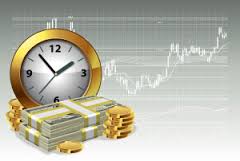 Everyone who want to trade, needs to open a demo account. This goes for experienced traders too; any time you learn a new trading technique, you have to practice it in a demo account first. And when you trade in a demo account, treat it as if it were all the money in the world, because that’s the way you’re going to feel when you’re trading in a live account.
Everyone who want to trade, needs to open a demo account. This goes for experienced traders too; any time you learn a new trading technique, you have to practice it in a demo account first. And when you trade in a demo account, treat it as if it were all the money in the world, because that’s the way you’re going to feel when you’re trading in a live account.
Many will say that demo trading doesn’t help because it is not the same as in real trading. It doesn’t feel the same because you’re not treating it the same way that you treat real trading. Then treat practice—in this case demo trading—as if it were real, and it will help your live trading. All the practice in the world will do you no good if you treat it like a joke. It’s all in your head. We practice like we trade.
“The more you sweat in practice, the less you bleed in battle.” -Unknown
Trade successfully
If you are new to trading, you should trade a demo account for at least three months. A good rule of thumb would be for you to trade successfully for at least three months in a demo account before attempting to trade live.
 This part is important—when I say “trade successfully,” that doesn’t mean that you should place random trades or hold on to losing trades in the hope that they will become winners. That is not successful trading. In fact, if you are hanging on to losers, this could ultimately result in the demise of your account and the end of your trading career. Why? Because a person who does this will eventually hold a loser that will not come back. There are some rules that I have shared in my previous article on 25 Rules of Trading Discipline which can help you to trade successfully.
This part is important—when I say “trade successfully,” that doesn’t mean that you should place random trades or hold on to losing trades in the hope that they will become winners. That is not successful trading. In fact, if you are hanging on to losers, this could ultimately result in the demise of your account and the end of your trading career. Why? Because a person who does this will eventually hold a loser that will not come back. There are some rules that I have shared in my previous article on 25 Rules of Trading Discipline which can help you to trade successfully.
Rules to follow
If 25 rules are too much for you, then just follow these simple 4 rules as described. You might want to write these down and stick them to your computer monitor, so that you’ll never forget. Make it part of your routine to review these rules daily, and try to ingrain them into your thought process.
Rule #1: Holding Losses Is Not Allowed
Rule #2: Adding to Losses Is Not Allowed
Rule #3: You Must Use a Stop Loss on Every Trade
Rule #4: Always Tighten Stop Loss, Never Loosen Stop Loss
Rules #1 through #3 are self-explanatory, but Rule #4 might require some explanation. In trading, when we say “tighten,” it means to move the stop loss closer to the current price, thus reducing risk. Whenever we move a stop loss, we must tighten it. This means that we raise a stop when we are in a long position, or we lower a stop when we are in a short position.
On the other hand, never “loosening” a stop loss because it increases risk. An example of loosening would be to lower the stop loss on a long position, or to raise the stop loss on a short position. In either case, the risk is increased—so loosening a stop loss is considered unacceptable. Traders who loosen stop loss have a tendency to cease using them, thus opening the door to a huge and unrecoverable losses.
Start by trading small
If you can trade successfully for at least three consecutive months in a demo account, and if you are doing everything correctly then feel free to progress to live trading. Notice that I didn’t say “if you feel confident”; confidence can be a wonderful thing, but confidence alone will not make you a winner. My recommendation is that your first live account should be a “micro” account, one that allows you to trade live, but at the same time allows for little risk.
Trading in a micro account is the equivalent of playing “penny poker.” It’s a real game with real money, but it’s difficult (but not impossible) to get hurt when you’re trading EUR/USD for 10 cents per pip. If you continue to trade well in your micro account, move up to a “mini” account, where one EUR/USD has a value of $1 per pip.
It is the same for anything that you want to master. Take for example of a baseball player, he must advance through level A, then level AA, and finally the highest minor league level, AAA before he can make it to the “big leagues”.
Let’s apply this to Forex trading. We put demo trading as level A, micro trading as level AA, and mini trading as level AAA. If you can proceed successfully through these levels, spending at least three months trading successfully at each level, you just might be ready for the major leagues—in this case, a standard account (one in which EUR/USD has a pip value of $10).
How long will it take to learn how to trade?
 You might be wondering “How long will it take to learn how to trade?” or “How long will it take me to progress to the top level of trading?” The answer really depends upon each individual. We have laid the groundwork for your rise through the minor league ranks, but everyone learns at their own pace, so if you’re not ready to advance, be patient. After all, how long does it take to learn how to play the piano, or to ice skate? The answer depends on the student and their level of motivation.
You might be wondering “How long will it take to learn how to trade?” or “How long will it take me to progress to the top level of trading?” The answer really depends upon each individual. We have laid the groundwork for your rise through the minor league ranks, but everyone learns at their own pace, so if you’re not ready to advance, be patient. After all, how long does it take to learn how to play the piano, or to ice skate? The answer depends on the student and their level of motivation.
Try not to worry about the length of time involved or how long it takes to become a good trader. Instead, focus on doing things correctly, master the skills and perfecting the processes of trading. The market will still be there when you’re ready. If you do things the right way, you’ll get there faster. When you have accomplished this, you will be a good trader. First comes the work, and then come the rewards.
Your comments…
If you are starting off to be a day trader yourself, can this article help you?
Share your comments below and feel free to share this post with your friends!
